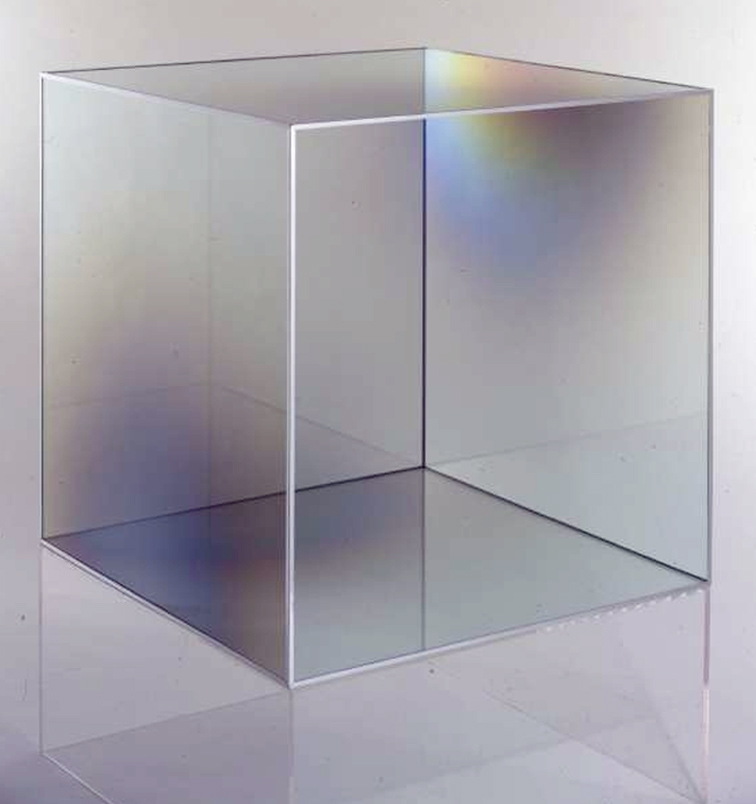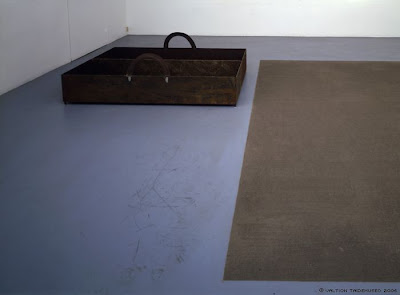
Miroslaw Balka is a Polish contemporary sculptor (b 1958). He attended the Warsaw Academy, where he made his first notable sculpture centered around the themes of rite of passage and graduation, and accompanied it with a ritualistic performance. In the 80s he matured into figurative sculptural pieces using "symbolic materials," such as ashes and wood, and in the 90s moved toward non-figurative forms that possessed anatomical qualities reflective of the human figure, (beds, coffins, etc). One example of this type of work is noted by the Artbook, below.
190 x 30 x 7, 190 x 30 x 7, 50 x 42 x 1, 1993
This piece, entitled 190 x 30 x 7, 190 x 30 x 7, 50 x 42 x 1, consists of two identical plates of steel on the wall and one square of carpet on the floor that reflect the dimensions of Balka's body in space. The steel plates are ritualistically smeared with a strong smelling soap, possibly to express a "process of washing and cleansing," as noted by the Artbook. The three pieces loom nostalgically in reminiscence of fleeting marks of human existence, while the medium speaks to an alternate industrially materialistic world, in existence within and throughout humanity. As the Tate notes, Balka's work is strongly conveyed through personal and inner experience, which he has maintained throughout his career. " The persistence of personal associations could be seen as an assertion of the individual against the collectivisation of life... while the use of ordinary industrial materials suggests a protest against the influx of western consumer capitalism into Eastern Europe." The Artbook provides another take on the piece, saying that Balka evokes a "quiet sense of the sacred that can be found in even the most humble existence."
"Silent and dour, his often wretched objects take on a certain sacredness, dignity, and even grandeur, but instead of being expressions of faith, his vessels, wooden constructions, and depictions of the human body are empty relics." (MoMA)
Untitled 1985-1990

Fire Place, 1986
History 1988
Moulting, 1988
Angel of St. Adalbert, 1988
Oasis (C.D.F.), 1989, currently on display at the Tate
Installation, 1990
"250x380x0,3, 190x60x59, 190x60x59", 1994

"250x380x0,3, 190x60x59, 190x60x59", 1994
'As wretchedness and grandeur are brought together, a sense of the sacred is felt. Perhaps it is Balka's humble means that succeed in evoking reverence in the viewer.'

290 x 190 x 89, [diameter]20 x 23, [diameter]20 x 23 1995

Zeitnot, 1996

3 x (57 x 50 x 50) , 2003,

Blue Gas Eyes 2004

250 x 700 x 455, 41 x 41/Zoo/T (2007)
Balka recently had a solo show this spring at University of Massachusetts entitled Gravity, as well as works in many major group exhibitions including a retrospective in Copenhagen featuring work produced after 1959.




























































